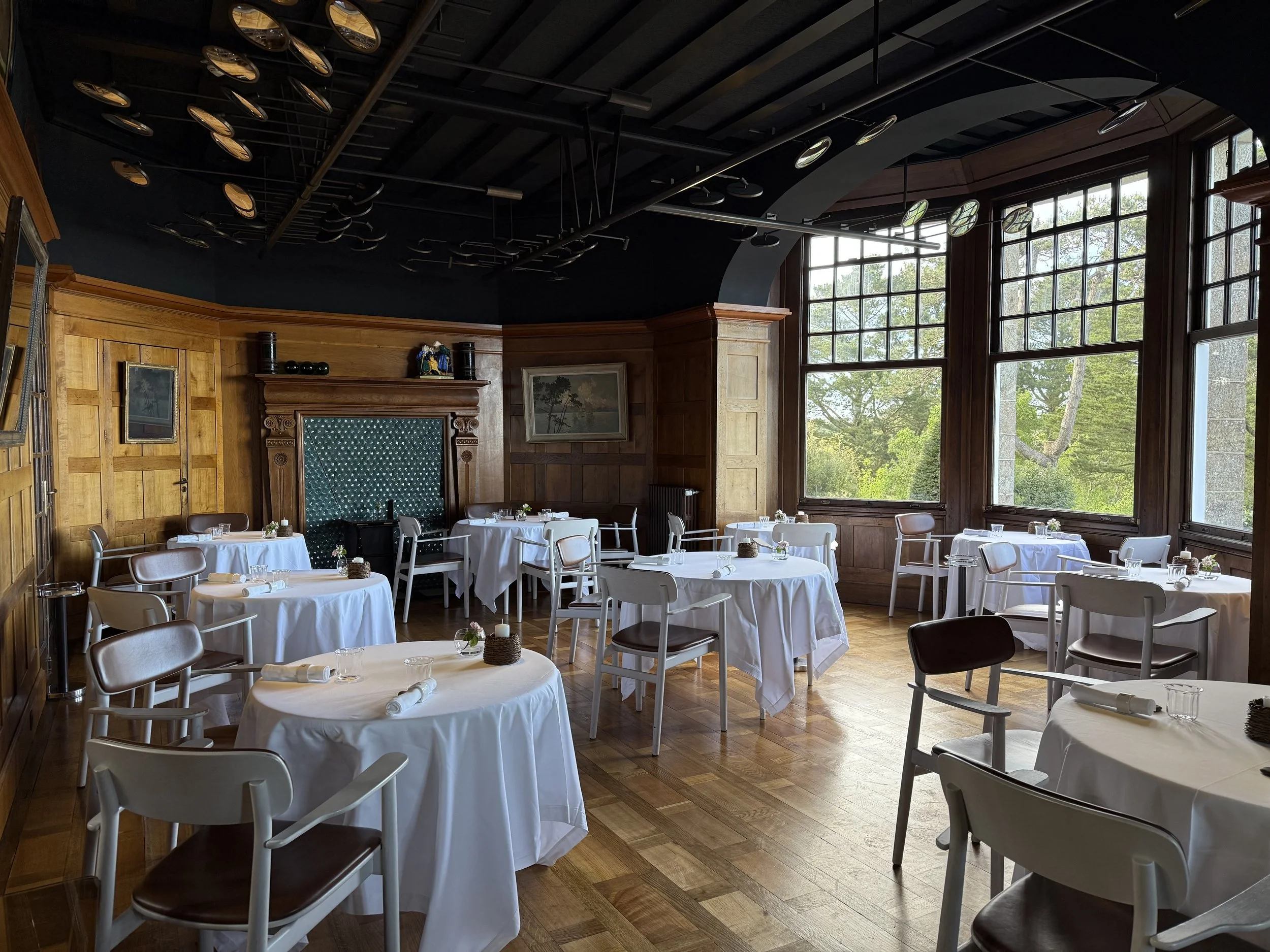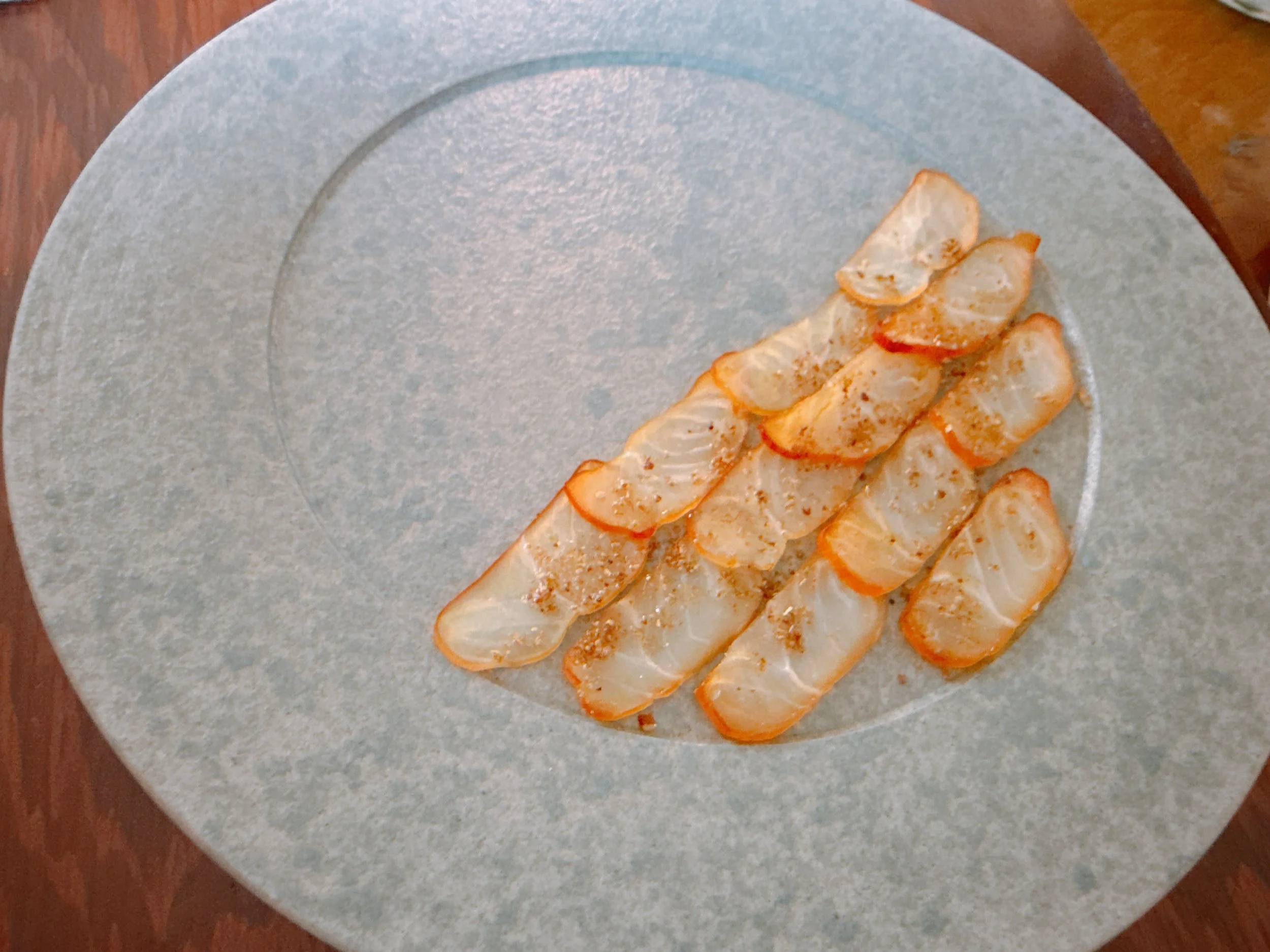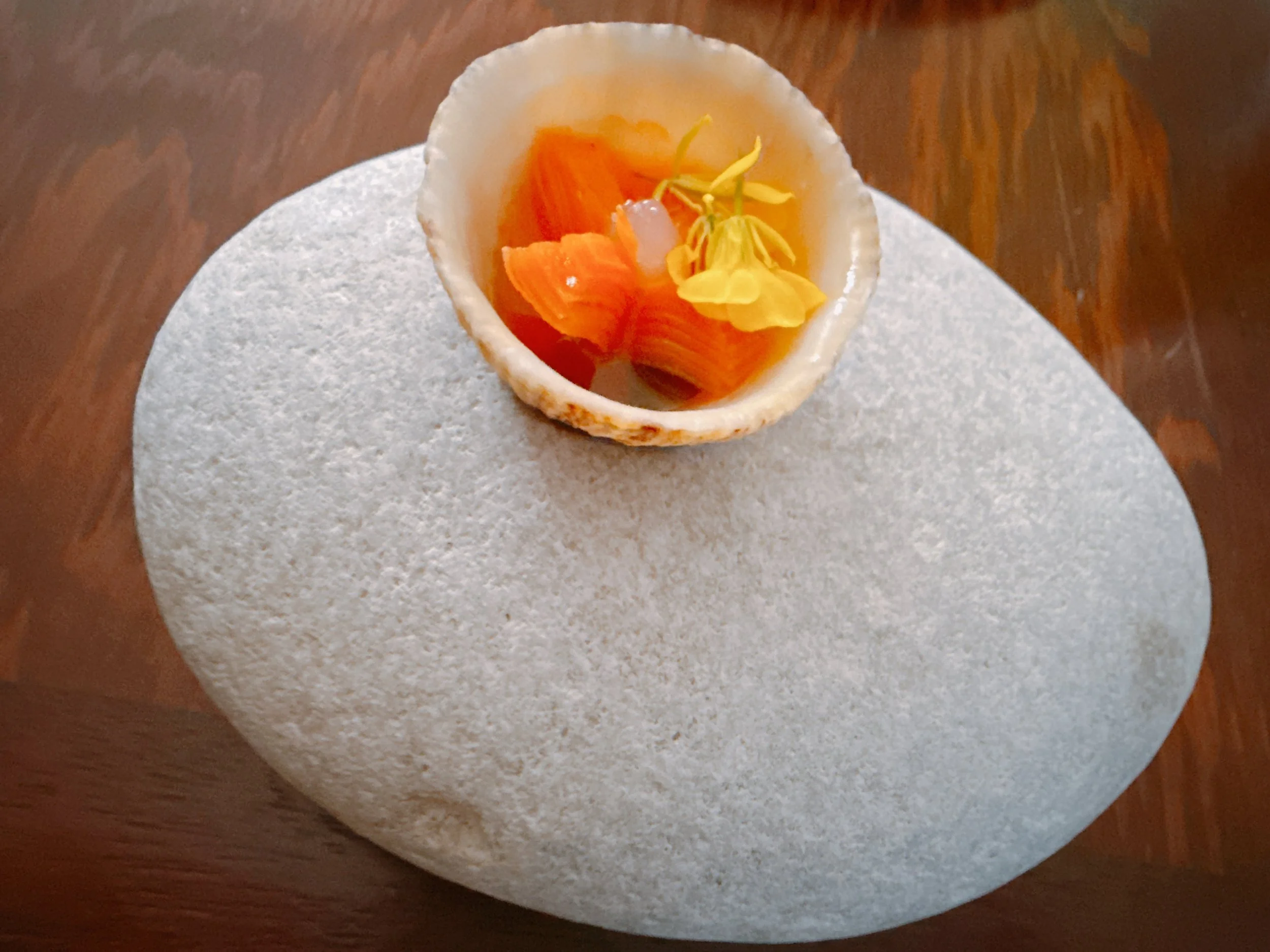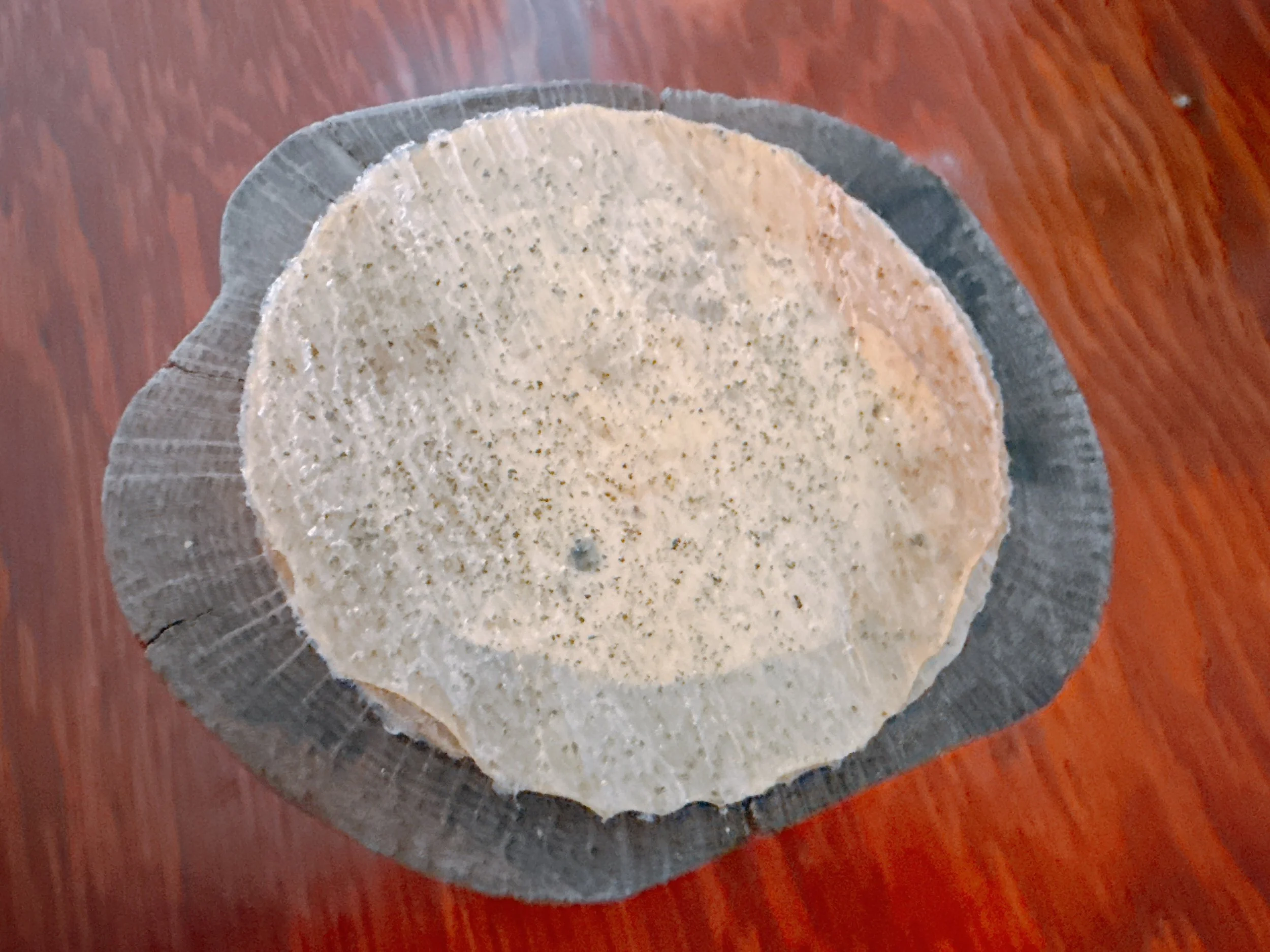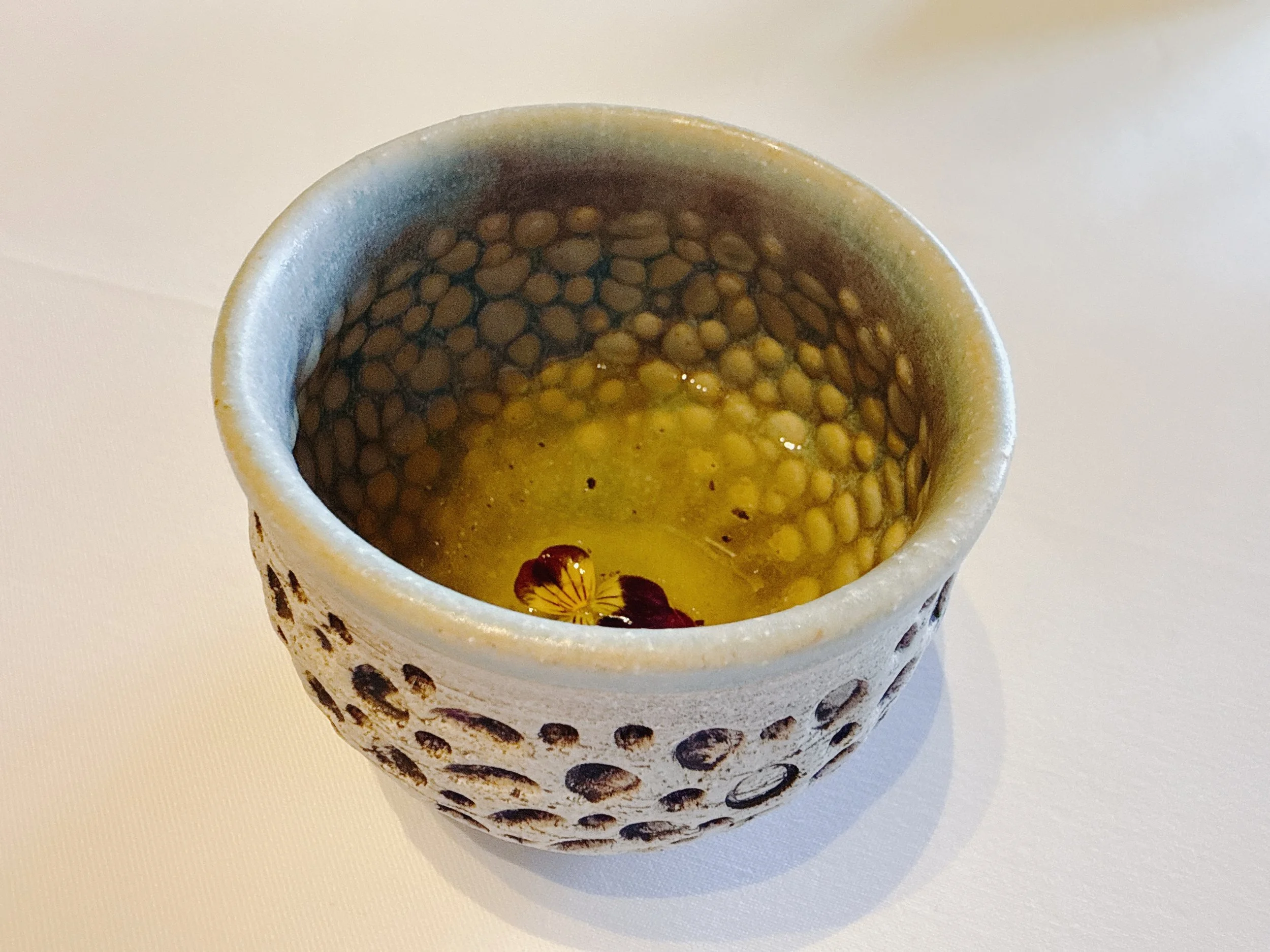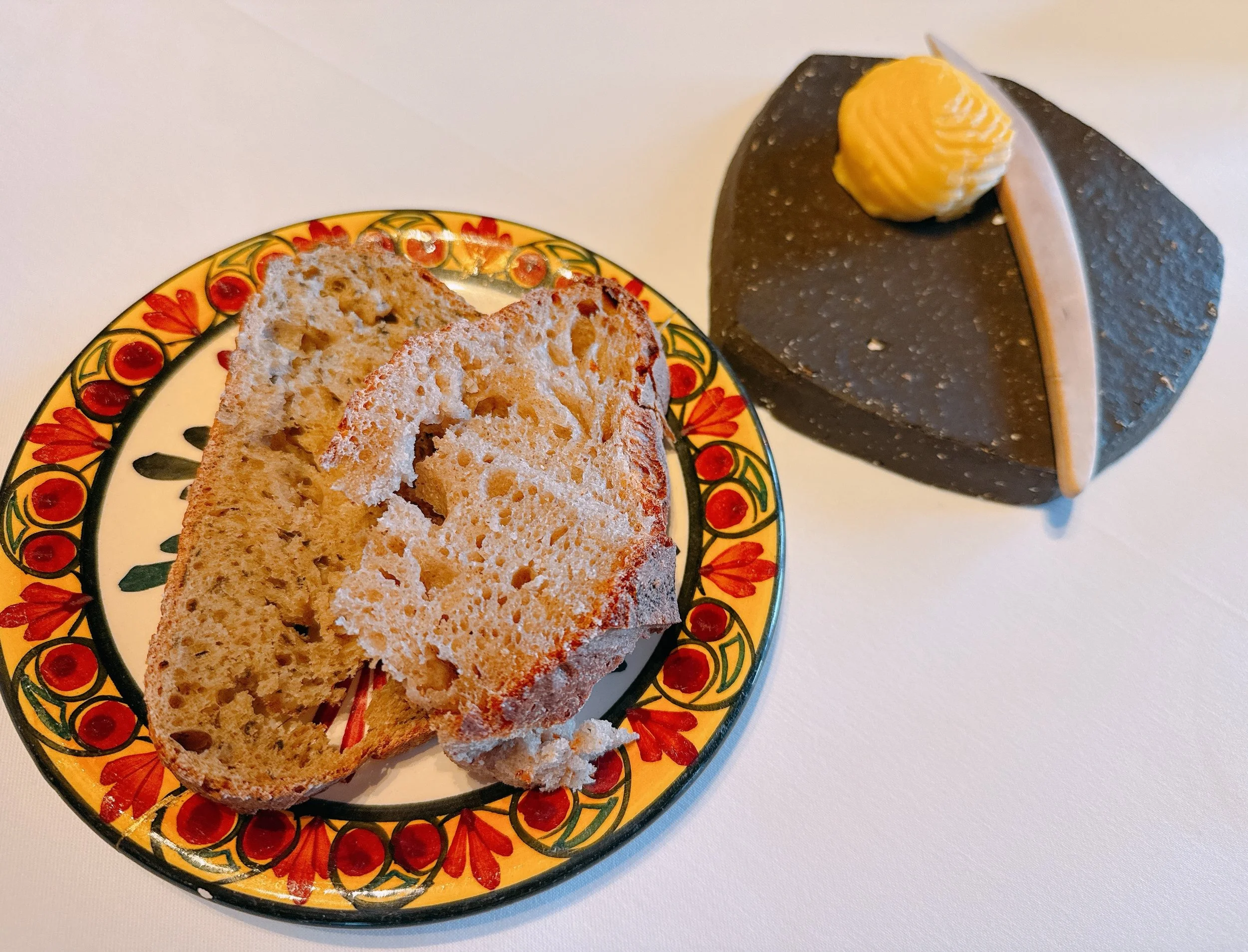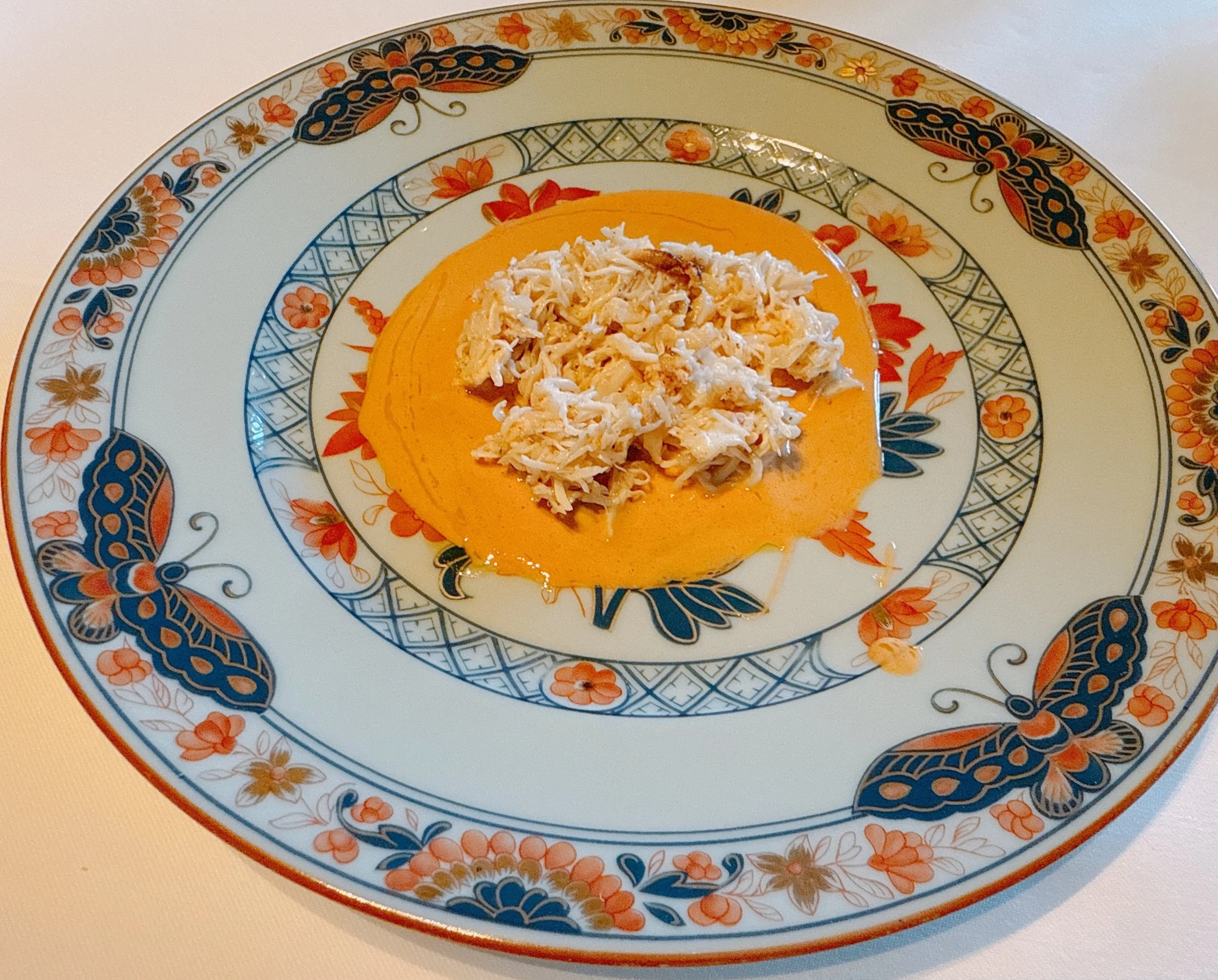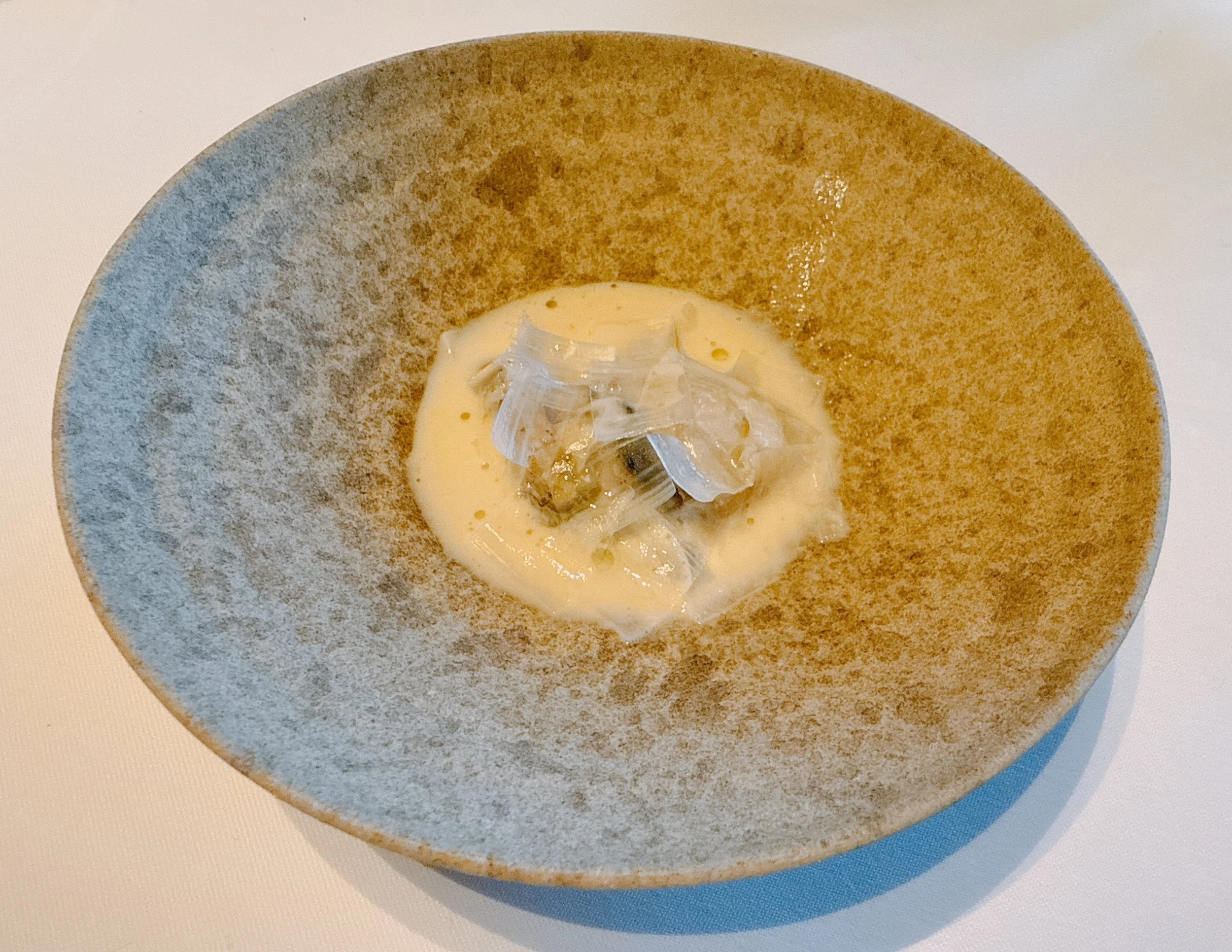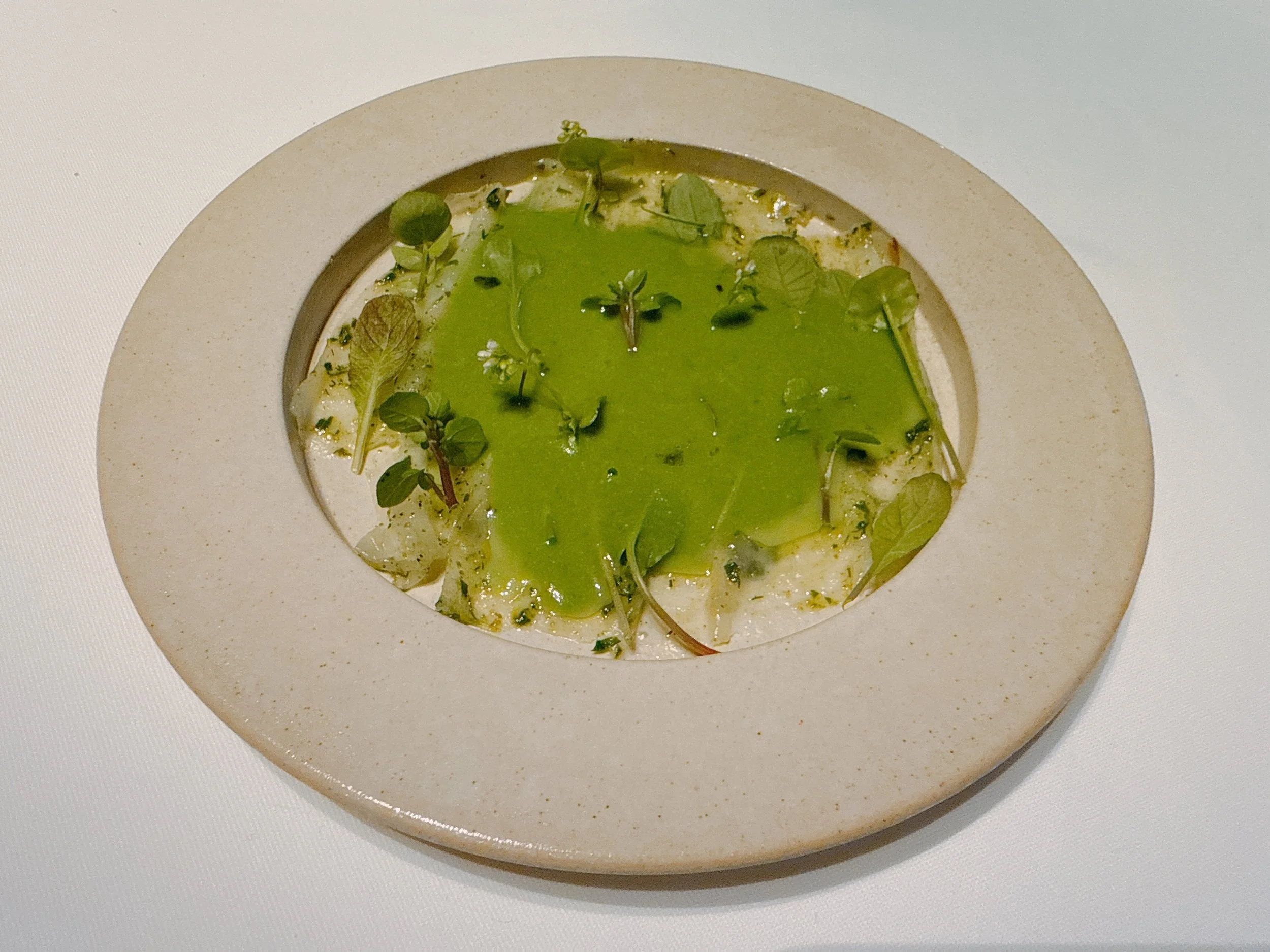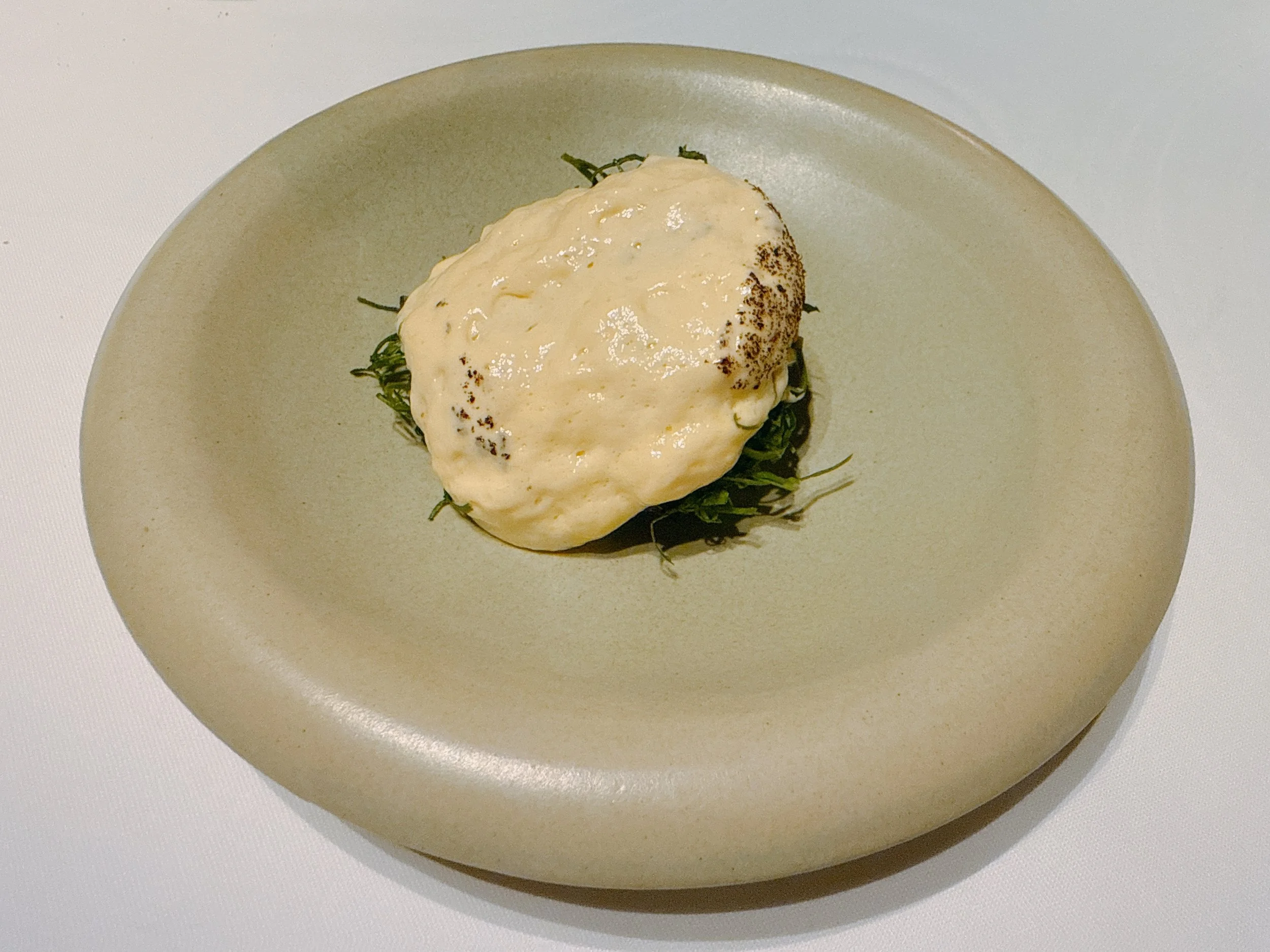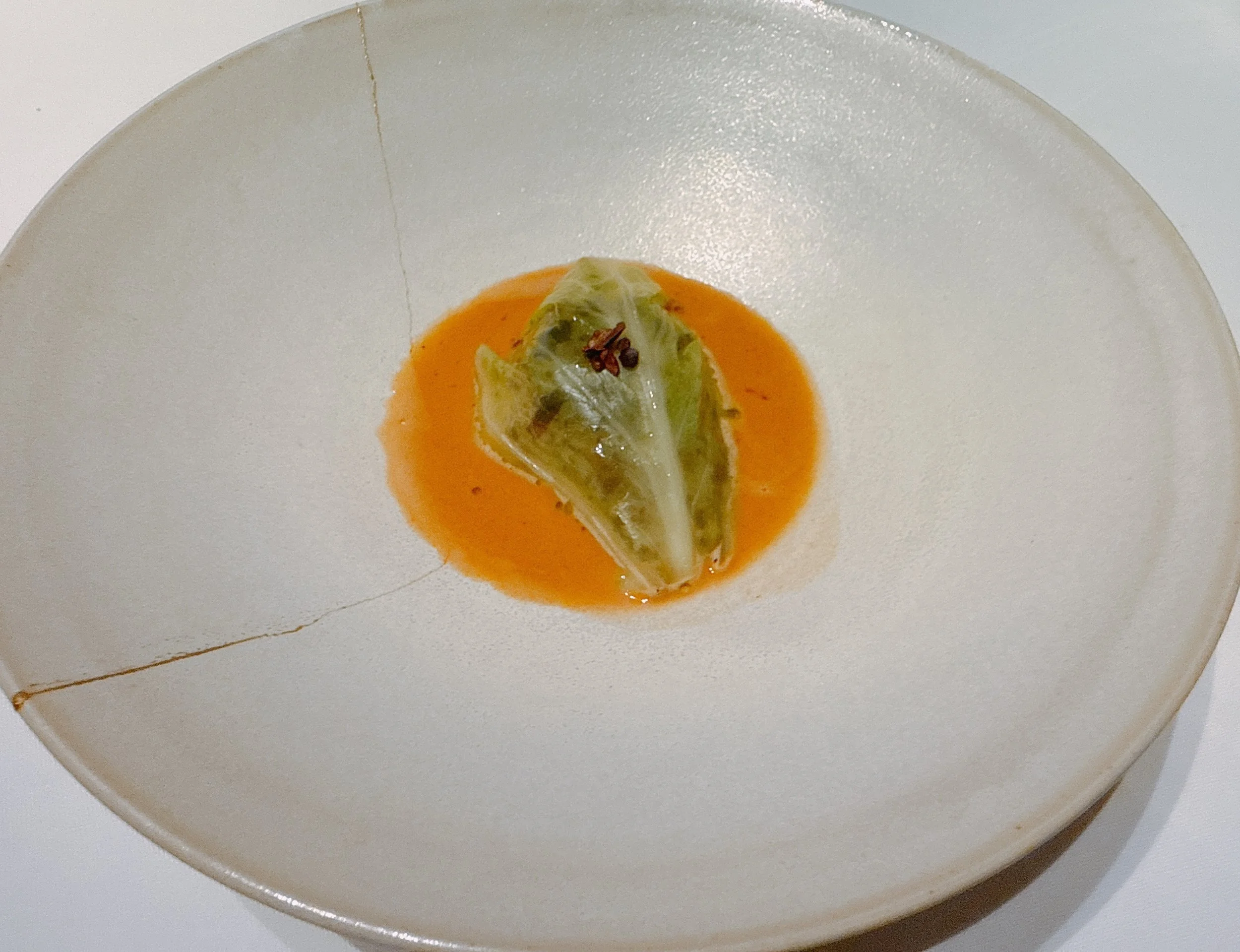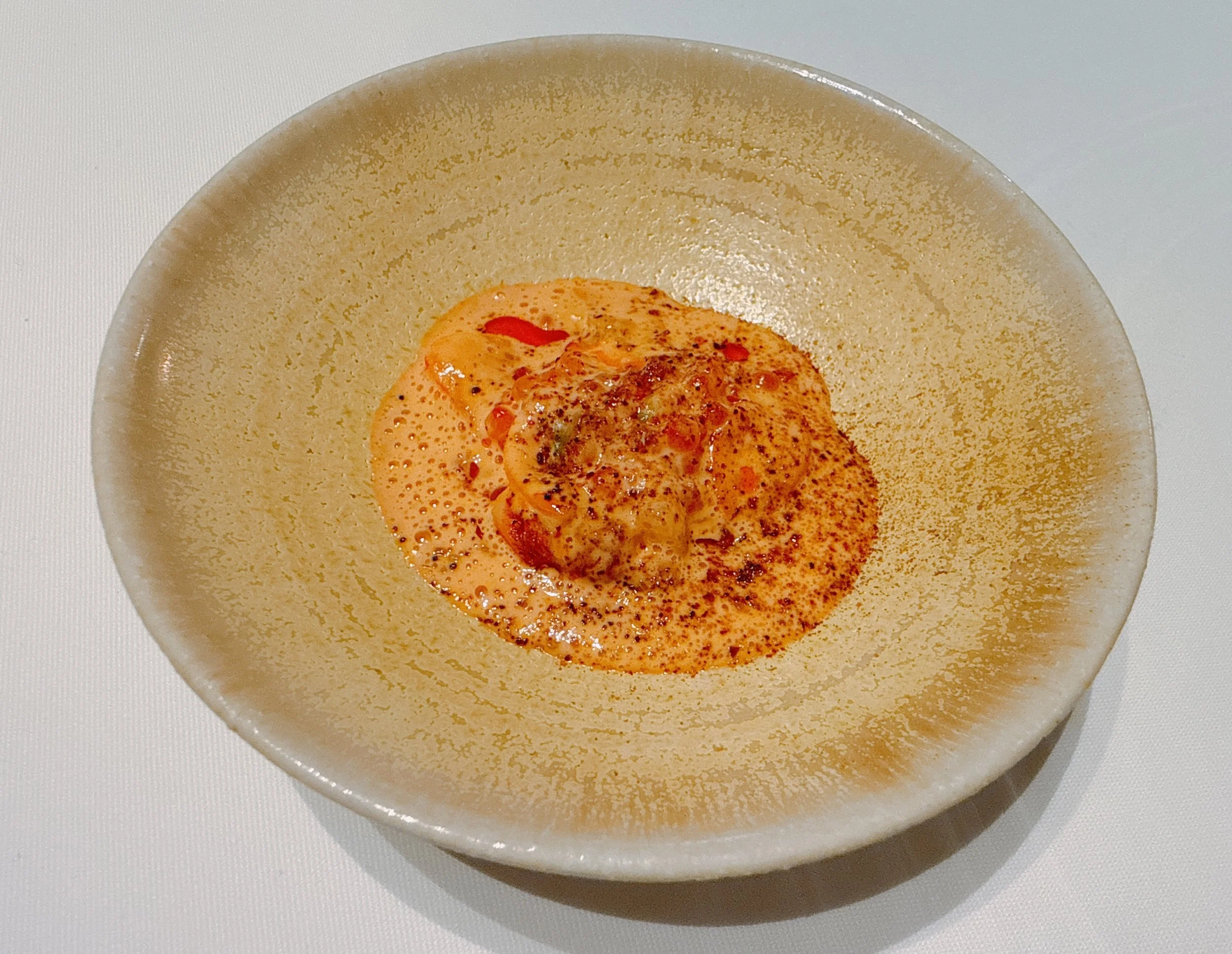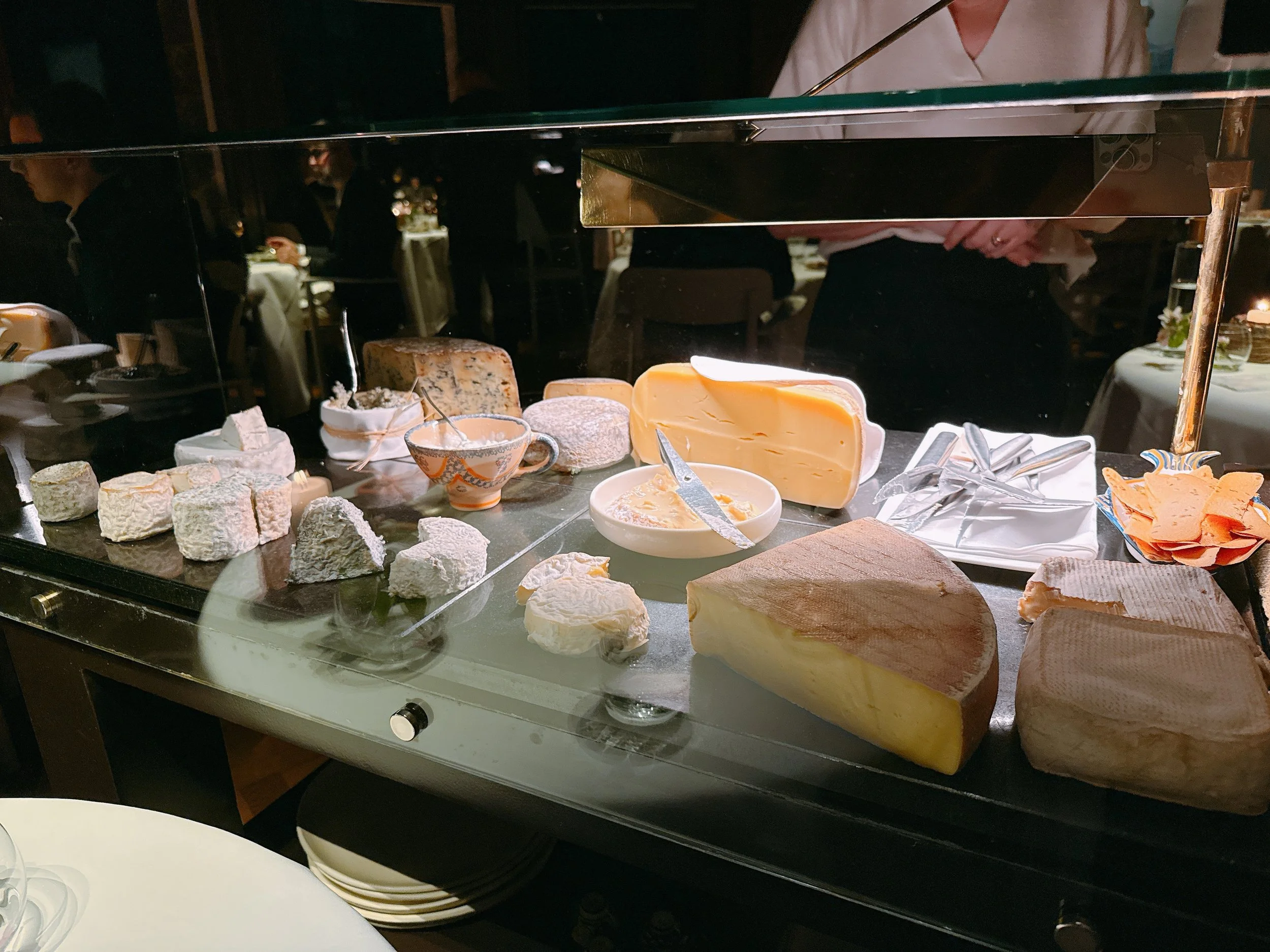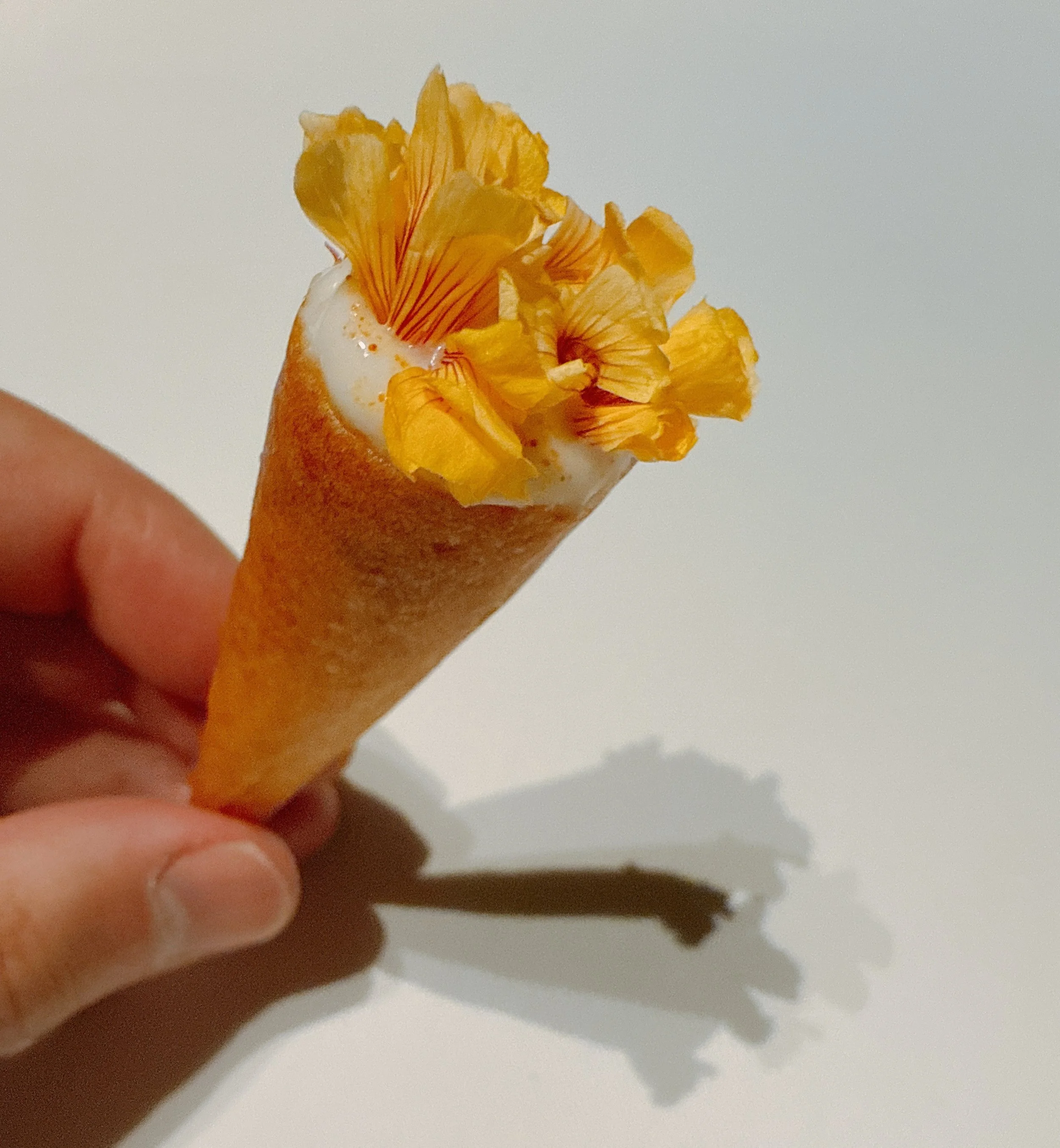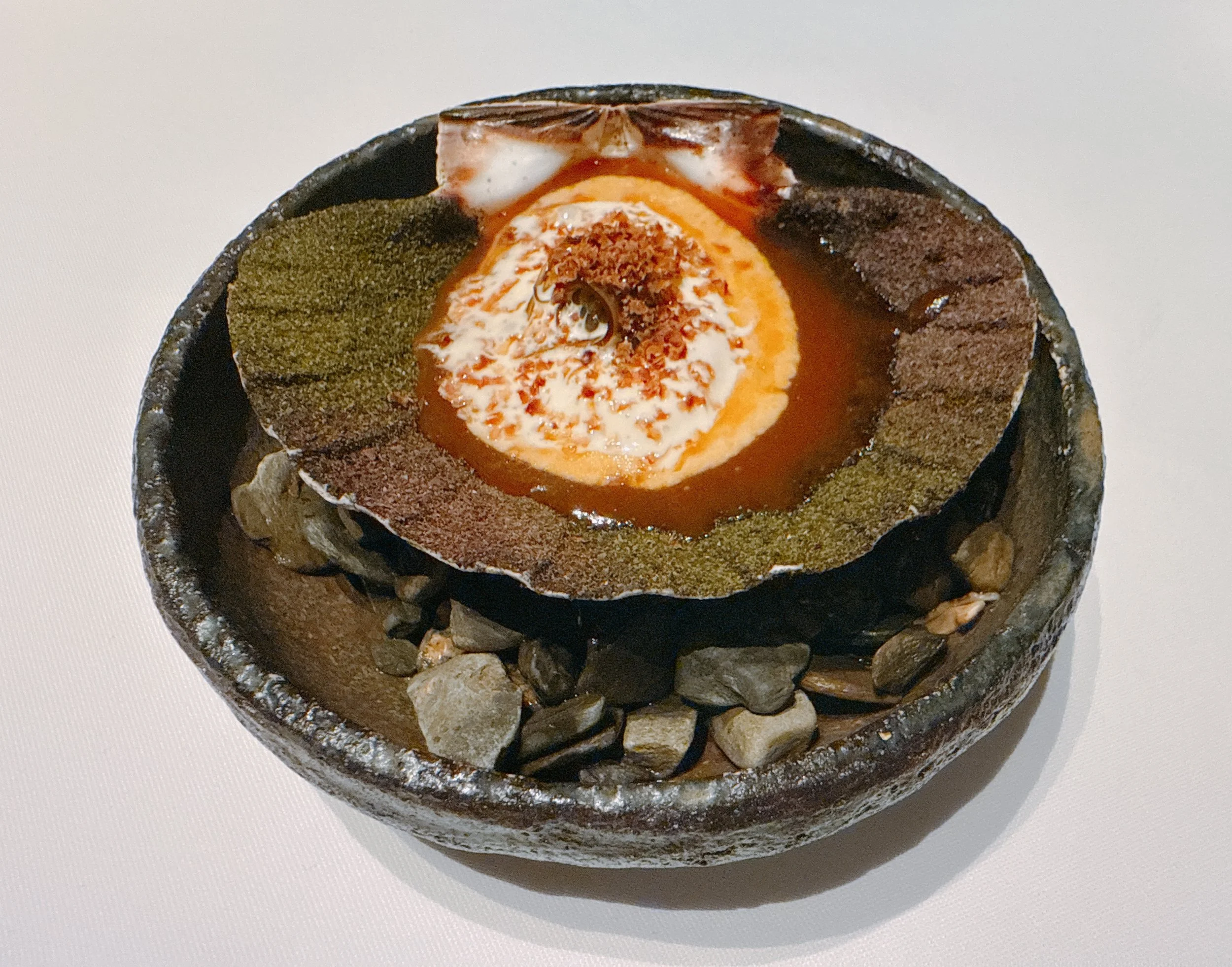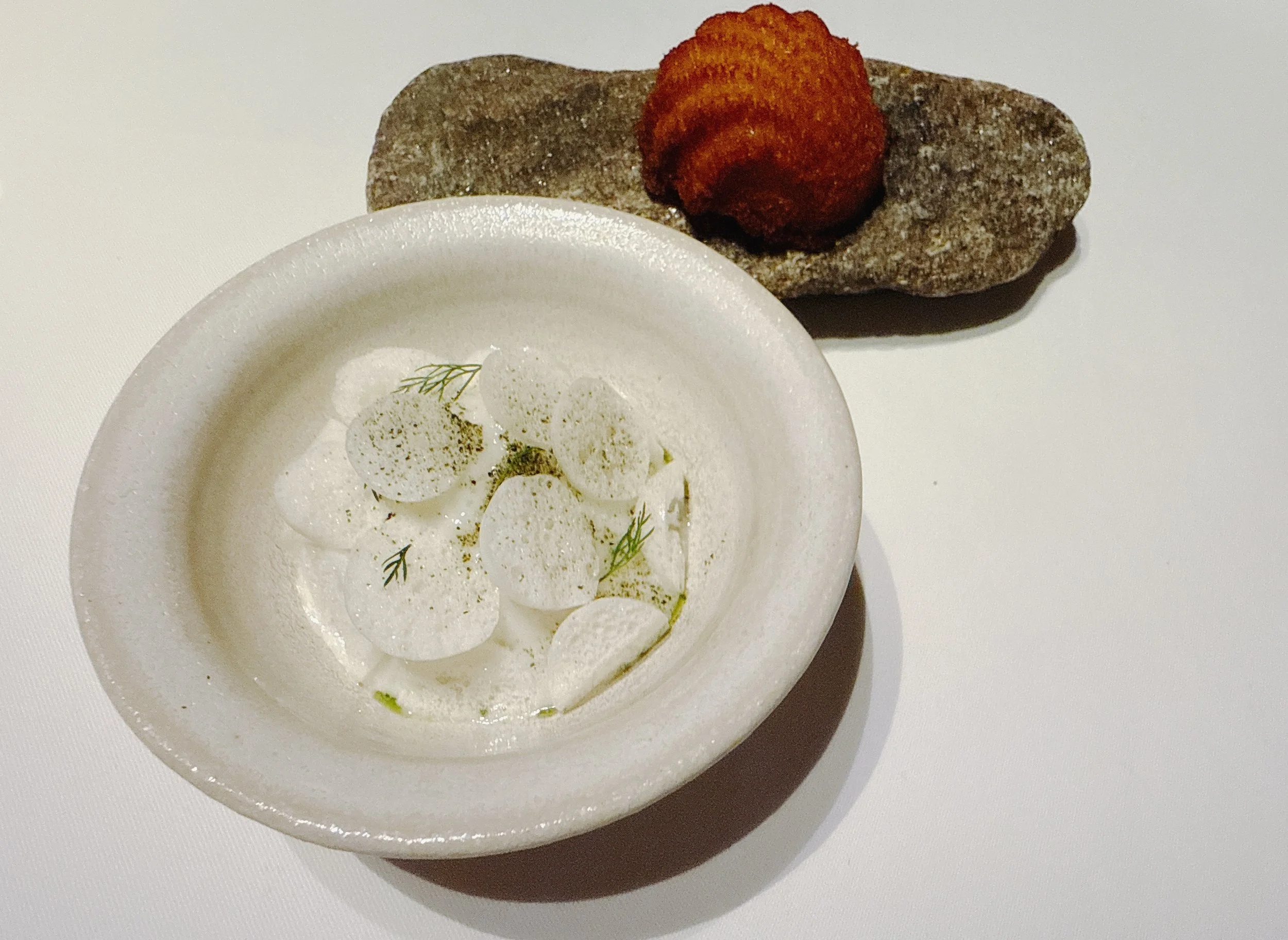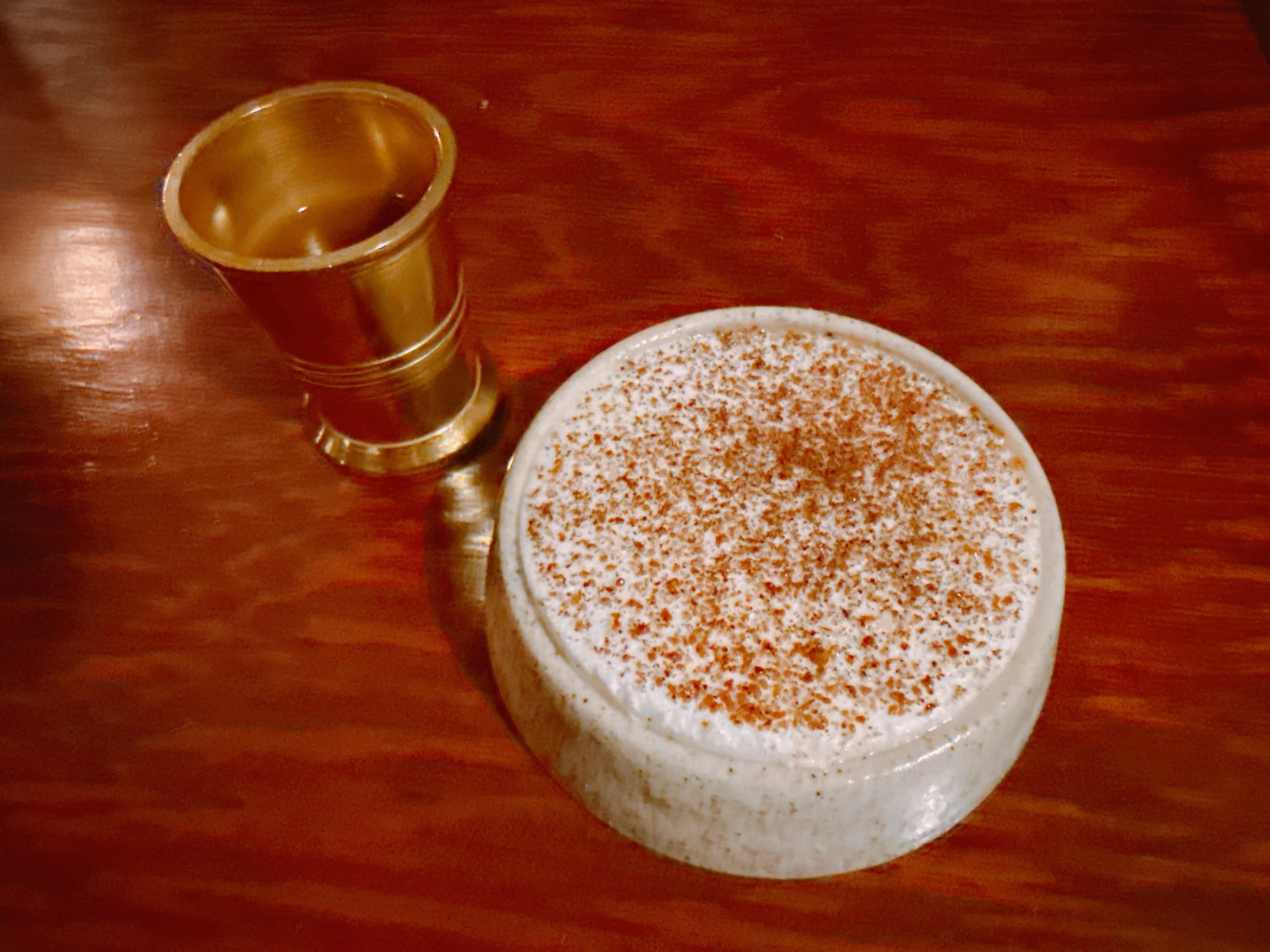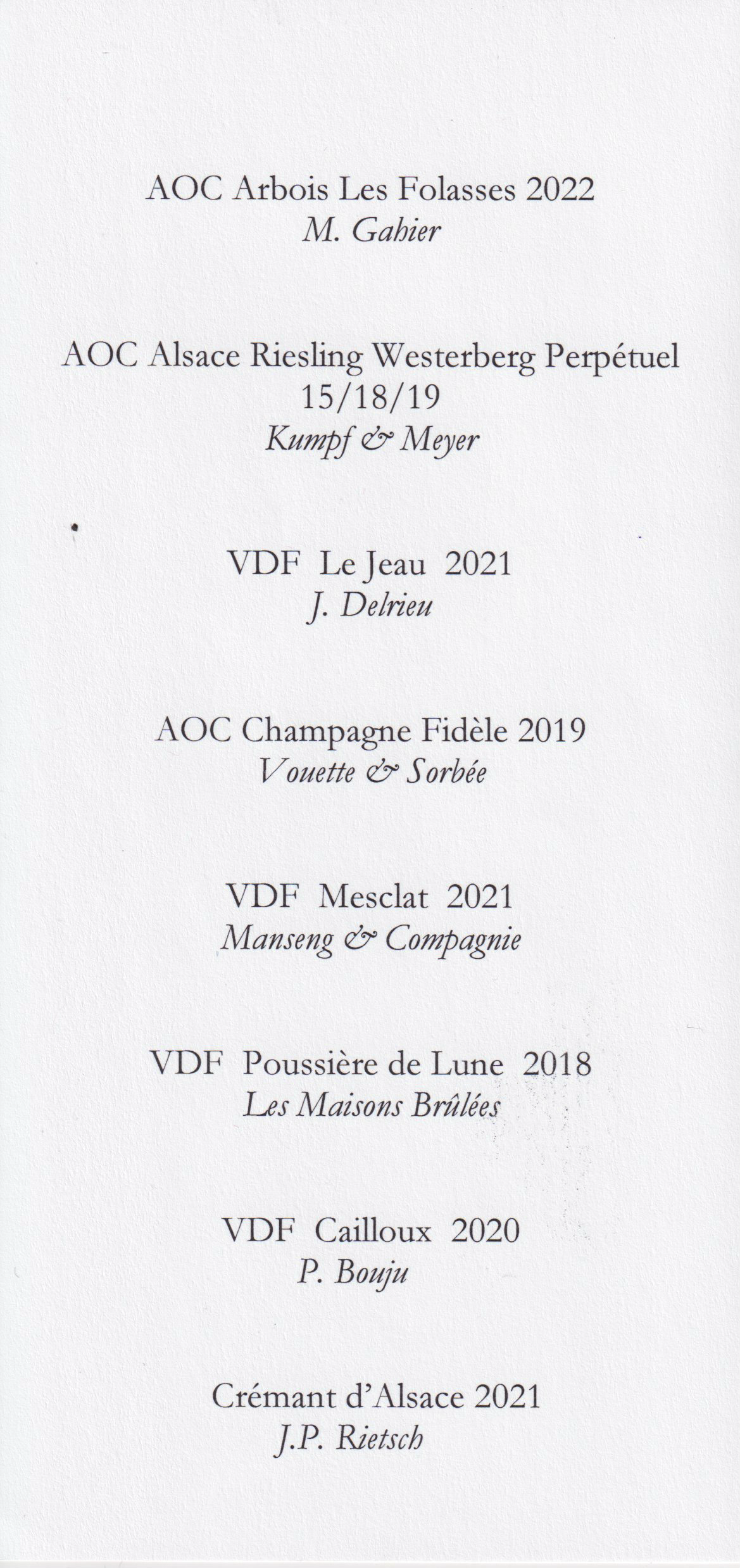Le Coquillage - Saint-Méloir-des-Ondes
Rating: 16/20
Where: Saint-Méloir-des-Ondes, France
When: Dinner for 2 on 23 April 2025
Cost per Person: Tasting menu 255 Euro, Wine pairing 145 Euro
Accolades: 3 Michelin Stars
Why: Varied seafood dishes, many local ingredients including from the restaurant's farm
“Le Coquillage” is a restaurant on Brittany's coast that requires that proverbial special journey to get to. It is a 2 1/2 hour train ride away from Paris, followed by 10 minutes or so in a taxi, which finally deposits one on the doorsteps of a castle. Maybe not quite as storied as Hogwarts, the building still had a tumultuous history: bought in the 1920s by a family Bricourt as their (very grand) home, it was taken over by the Nazis in World War II, and then more recently acquired by the family Roellinger who have converted it into a hotel and restaurant. The interior design adheres to an old school style, veering more towards period drama (or Harry Potter movie) than modern simplicity. The building sits on truly extensive grounds featuring farmlands, a greenhouse, beehives, cows and donkeys. In addition there are some cottages, also available for overnight stays, that have been renovated in a rustic, but more modern style than the main house. All in all, a pretty nice place for a getaway from the city, right on the rugged sea shore where one can see Mont Saint-Michel on a good day. The only downside is that it's expensive: a single room here costs more than a dinner for two.
Maybe surprisingly, this remote area of Brittany is not new to the world of three-Michelin-starred restaurants. Olivier Roellinger, the father of Le Coquillage's chef, helmed the “Maison de Bricourt” in nearby Cancale, and held three Michelin stars from 2006 until the restaurant's closing in 2008. Today, the elder Roellinger is running a prolific spice mix business, selling them online and at stores in Cancale and Paris. These spices are quite renowned: we had previously encountered them in a dish at two-Michelin-starred Tohru in der Schreiberei in Munich.
Olivier's son Hugo now runs the formerly casual “Le Coquillage”. The restaurant had two Michelin stars for about half a decade before receiving its ultimate third star in 2025. As the restaurant's name (“the seashell”) suggests, the focus here is on seafood, with much of it hailing from the local bay, and the menu is entirely pescatarian.
During our visit, only a single tasting menu was being served, so our choices were restricted to the beverages (for lunch, a shorter menu is also available). Among our choices were a non-alcoholic pairing for 105 Euro and an eight-glass wine pairing for 145 Euro. The latter focused on natural wines, and included several quite acidic whites that I wasn't too fond of. But the whites served during the later part of the dinner, as well as the sparkling wines and the single red wine were pretty decent. Ordering a good bottle of wine is probably a good alternative to getting the pairing.
Our dinner started in a lounge next the dining room. Here, we were served an (optional) aperitif and a few small bites. First, we had smoked slices of red mullet seasoned with the family's “Neptune Powder” spice mix. The fish had a smoky and lightly marinated flavor, but the spices were almost impossible to taste 15. Next, we tried a carrot seasoned with shiso, coriander and mustard flowers. The carrot was crunchy, and its sauce had a hint of acidity, but the other flavors were extremely light. Essentially, just a piece of carrot then - not too exciting 13. Our third bite was an oyster from nearby Cancale topped with a dollop of chili sauce. The oyster had a briny taste, but the chili sauce was very light 15. The final serving in the lounge was a cream of pollack, sandwiched between two very thin crisps. The fish flavor was so light to be almost non-existent - clearly there was a pattern here. The crisps were fine, though: crunchy on the outside, and getting softer towards the middle where the fish cream was 14.
Appetizers are often used to make a statement, to set the scene for what's to come. So the choice to start out with extremely light flavors was curious - would they be followed by a big taste explosion soon? Or would the whole menu be essentially underseasoned? At the time we didn't know, but the flavors would indeed increase steadily throughout the menu, albeit very slowly, and only the final few dishes were seasoned at a level that I'd expect from a French restaurant. But I'm getting ahead of myself.
The restaurant had two adjacent dining rooms, both facing the ocean. The smaller one was bright, with white walls, ceiling and floors, whereas the larger one was much darker, with deep-brown wood paneling on the walls and ceilings and a wooden floor. The tables were illuminated indirectly via mirrors on the ceiling, a setup that I've never noticed before. No music was playing in the background, so there was no distraction from the food.
Our official first course was a spring vegetable broth, seasoned with black pepper, chervil and nasturtium oil. The soup had a very light vegetable taste, it almost felt Japanese in its avoidance of strong flavors 14.
We were then served two slices of bread, both at room temperature. One was a country bread, the other contained some seaweed. Both were crunchy, rustic and had light flavors. The lightly salted butter from near Rennes was a bit underwhelming at first, but developed more of a taste once it warmed up during our dinner. A pretty neutral bread course, but given the light flavors of the food, anything more would have been a poor fit 14.
Next, we were served a diver scallop, topped with a bit of cream and seasoned with black cardamom, hibiscus and an elderflower oil. The fresh scallop had been scored, presumably to better incorporate the sauce. That sauce was lightly acidic and had some floral notes and a hints of fruit. The cream was taste-neutral and mainly added some mouthfeel. Again, the flavors were very weak in this course. However, curiously, if one ate the entire dish, those small amounts of flavor would accumulate, so that towards the end there actually was a more noticeable - if still light - taste profile. However, if one took even a sip of wine, that flavor accumulation would be reset to zero, and one would have to start all over again. It seemed that drinking wine at this point of the dinner might actually have been counterproductive 14.
The next dish featured a spider crab. Its meat had been marinated with verbena pepper and was served on top of a sauce made from the crab's head, maritime pine oil, vinegar and fennel oil. The crab meat was of good quality, but again had only light flavors, although they were getting a tiny bit stronger compared to previous dishes. There was a small amount of spice, and the sauce was a bit mealy in texture. Just as with the previous dish, the more one ate here, the more pronounced the flavor became 15.
Another oyster from Cancale was served with thinly shaved pickled white asparagus, a lemon condiment, and a sauce made from angelica and jasmine. The medium-size oyster tasted of the sea, and the white asparagus was pretty lightly flavored. The more one ate of this dish, the more there was a hint of lemon 14.
Marinated sea bream was served with black currant oil, seaweed, pepper, buckwheat jelly, mushrooms, koji, a browned butter sauce and French caviar. The fish was savory and had a bit of a bite, but the strongest flavor here came from the mushrooms that were served a smidgen below room temperature. The caviar also added a bit of flavor, but the accompanying sauce was pretty light 16.
Slices of almost transparent grilled cuttlefish came with a green coulis made of watercress, spinach and almond milk, as well as some herbs, including sorrel, winter purslane, and watercress. The dish was served slightly warm, and the cuttlefish had a light bite, but wasn't chewy. Curiously, we were given training chopsticks to pick up the seafood - maybe they didn't trust us with real ones? A lovely mix of seafood and herbal flavors, the latter in a few cases even a bit spicy. Although the flavors were finally getting more pronounced, they still remained restrained and very well balanced 17.
A langoustine was served with morel mushrooms, shaved spinach and a mousseline sauce made with a local honey wine. The sauce on top was warm, whereas the langoustine itself was slightly colder. We were definitely getting more flavor at this point: the langoustine was juicy and a bit sweet due to its marinade, the spinach added some texture, and the sauce had a hint of acidity 17.
The final savory dish, and the only one paired with a red wine, consisted of two preparations of lobster. First, the body of the lobster was topped with a braised cabbage leaf and surrounded by a sauce made from sun-dried tomatoes, green mango powder, Mexican cocoa, sweet chili and vinegar. The lobster itself was cooked expertly and very tender. There were lots of flavors here - spices and some acidity 17. The lobster's claw was served with trout roe from Brittany and a spice mix from West Africa. The claw was more thoroughly cooked than the body, the sauce smoky, acidic and creamy with lots of spices, but with only an slight aftertaste of spiciness 17.
We added the optional cheese course (28 Euro), consisting exclusively of cheeses from Brittany. Maybe not the best cheese course I've ever had, but still offering a pretty good variety of cheeses from light to fragrant. Particularly impressive was the large selection of condiments that were artfully arranged on the plate. Among them: herbs from the garden, figs, kumquats, an apple/saffron jelly and salted cider vinegar. Our server was very enthusiastic about the cheese selections and encouraged us to “if in doubt, pick one more”.
After the cheeses, we had an exceptionally long wait before the next course arrived. Based on my photo timestamps, it took an astonishing 53 minutes. During that time, we saw other tables progress all the way through their dessert courses and finish their dinner. Strange.
The long awaited next serving was a crunchy crepe cone filled with a cream made with turmeric and the honey from the restaurant's beehives. Interestingly, the filling seemed to have a texture reminiscent of bee pollen 14.
The next dessert had a seaweed ice cream, miso, hazelnuts, melted toffee, shredded scallops, and ossetra caviar. On the side was a herbal tea made from California poppy and holy basil (another product of the Roellinger spice factory). The tea was a bit cinnamonny, light and slightly tart. The dessert was a good match, since it brought out the spice notes in the tea. About that dessert: using seafood in desserts is always audacious, but in this case, the balance leaned heavily towards the sweet side, especially thanks to the caramel. So overall this ended up being a pretty sweet dish with some light savory notes. The ice cream had some smokiness and the scallops provided a crunchy texture 17.
Sweet and sour kiwi was served over a nasturtium sorbet and was seasoned with fennel and oxalis grass. There were some sweet meringues in this dish, but otherwise, it was a bit sour 15. On the side was a citrus fruit madeleine that was warm and crunchy 16.
For the last couple of bites, we retraced our steps to the lounge. The first dish contained three variations of vanilla: marshmallows, a sauce and a kind of meringue. It came with a hot infusion of white rum, hot cider and spices. Both allusions to the spice trade, evidently. The dessert was fine, and the drink tasted mostly of cider 15.
Finally, we received a dark chocolate disc that was filled with black sesame and buckwheat. Not exactly the prettiest presentation for a chocolate praline, but its filling was nicely crunchy 14.
Overall: A menu that featured an impressive range of seafood dishes, often using local ingredients and produce from the restaurant's own farm. The ingredients were cooked expertly and flavors were nicely balanced, as befits a restaurant that is owned by a spice manufacturer. The service was also good, apart from a few long gaps between courses. My main issue with our dinner was the intensity of the flavors. Said intensity increased steadily throughout the meal, which in principle is not a bad idea, but it did so extremely slowly, so that the earlier dishes tasted of next to nothing. It took more than half the dinner to arrive at what I'd consider a reasonable level of seasoning. I was left a bit confused about why the kitchen would go to such extremes, and would probably ask for a salt shaker next time. Ideally though, that shouldn't be necessary at a three-Michelin-starred restaurant 16.
